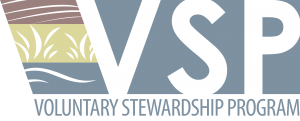History of the VSP

In 2006, Initiative 933 addressed regulatory taking of agricultural lands due to development regulations. It failed by 60 percent. The following year, the state Legislature commissioned the Ruckelshaus Center, a non-profit think tank based in Seattle, to examine the conflict between preserving agricultural lands and protecting critical areas in local ordinances adopted under the GMA. The process brought together stakeholders on this issue for discussion and development of a recommendation to the Legislature. A moratorium was placed on the requirement for local governments to update their critical area ordinances as they specifically applied to agricultural activities.

A Framework for Stewardship: Final Report of the William D. Ruckelshaus Center on the Work of the Agriculture and Critical Areas Committee was submitted to the Governor in October of 2010, and in July of 2011 legislature enacted Engrossed Substitute House Bill 1886 amending the GMA to create the Voluntary Stewardship Program.
The Program permits Counties to use a voluntary stewardship program in conjunction with stakeholders in lieu of enacting further critical areas regulations in regards to agricultural uses. At the state level, the voluntary stewardship program is to be administered by the Washington Conservation Commission.
The Program permits Counties to use a voluntary stewardship program in conjunction with stakeholders in lieu of enacting further critical areas regulations in regards to agricultural uses. At the state level, the voluntary stewardship program is to be administered by the Washington Conservation Commission.
The Voluntary Stewardship Program is the result of the hard work undertaken by the Ruckelshaus Center. In the spring of 2007, the state legislature adopted Substitute Senate Bill 5248 which included the following provisions:
- Required the Ruckelshaus Center to look into the conflicts between critical areas regulations and agricultural uses. The Ruckelshaus Center was tasked to conduct a fact finding mission, bring together stakeholders on this issue for discussion of the issues, and develop a recommendation to the legislature.
- Enacted a moratorium on new critical areas regulations on agricultural uses defined in the bill between May 1, 2007 and June 30, 2010. In 2010, the moratorium was extended until June 30, 2011 so the work could be completed.
- Permits the County to use a voluntary stewardship program in conjunction with stakeholders in lieu of enacting further critical areas regulations in regards to agricultural uses. At the state level, the voluntary stewardship program is to be administered by the Washington Conservation Commission.
- Continue under existing law and update critical areas regulations for agricultural uses.
- Limit the voluntary stewardship program to certain watersheds in the county, and update the critical areas regulations for other watersheds.

